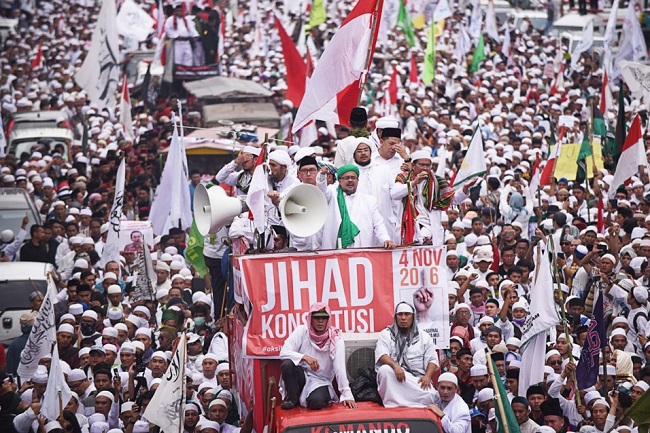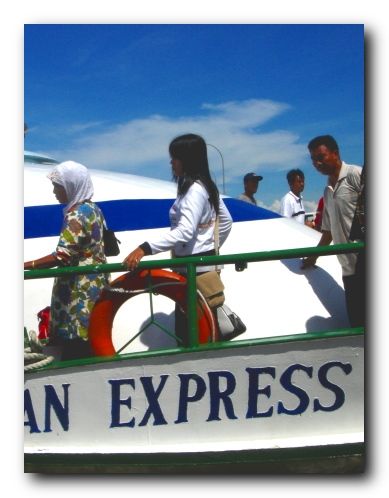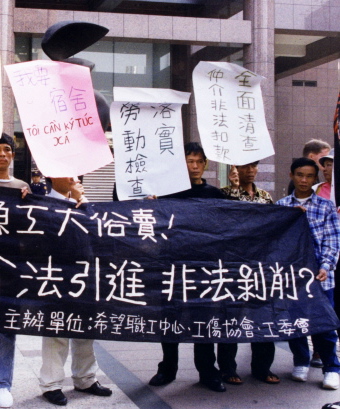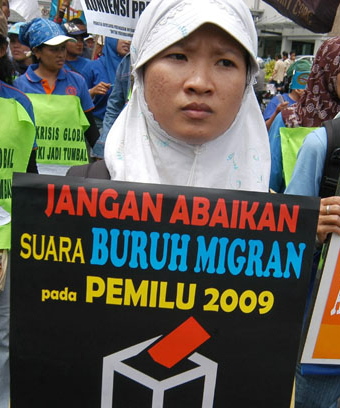Constructions of political, sexual and religious others in contemporary Indonesia
Annemarie Samuels and Ratna Saptari
Twenty years after the start of reformasi, Indonesia faces a shrinking space for religious diversity, sexual difference and critical social movements. Indonesia’s national slogan of ‘Unity in Diversity’ historically refers to a respect for difference within the principle of inclusion. At the moment, however, diversity is increasingly becoming a scapegoat for political and social evils. The anti-LGBT movement, the criminalisation of social movements and the religious fatwa against liberalism, secularism and religious minority groups are recent examples of social and political exclusion for the sake of ‘saving the nation’ or ‘purifying religion’.
These processes raise various questions such as: which groups are involved in the politics of exclusion and which groups are the targets, both now and under various historical circumstances? What socio-political instruments and perspectives are currently deployed to create an atmosphere of prejudice and social vigilance? And what are the strategies of the marginalised groups for resisting or surviving these efforts of marginalisation and criminalisation?
The essays in this issue show the diverse modes of interaction between those who are involved in the process of ‘shaming and blaming’ and those who represent the groups that are marginalised. They thereby examine the process in which state actors, corporate capital, NGOs and communities interact at the local level and utilise dominant discourses circulating at the national or international level in such interactions.
This issue is divided into three parts. The first three essays focus on the political and economic dimensions of marginalisation, involving state and corporate actors vis-à-vis local communities with their covert and overt responses. Herlambang Wiratraman’s essay focuses on state responses to local protests against goldmining operations in Banyuwangi that were causing environmental destruction. One of the protesters, Heri Budiawan (locally known as Budi Pego) was accused of spreading communism during the demonstrations, because a banner with the hammer and sickle logo had been displayed. The case was brought to court with the argument that he had not stopped the raising of the banner. The outcome was sealed by the authorities’ use of the ‘communist stigma’ in the judicial process. Under the 1999 Penal Code, Budi Pego was sentenced to five and a half months imprisonment.
The essay by Anton Novenanto highlights the public response of a local community to the continuous mud-flow considered to be caused by the natural gas drilling activities of PT Lapindo Brantas, an Indonesian oil and gas exploration company. Invoking a character from a Balinese ritual, the community dressed and epitomised an effigy of one of the main stakeholders of the company, Aburizal Bakrie, as the ‘Yellow Ogre’. They then ritually drowned it to symbolically cleanse the village from evil spirits and bad luck. This essay shows how by reframing classic narratives through creative art, this local community criticised the political actors that they considered to be endangering their present and future lives.
Highlighting the more covert survival strategies of victims of the 1965 genocide and other forms of violence, Grace Leksana examines individual interactions at the village level shaped by the post-1965 political landscape in East Java. Leksana narrates her encounters with two men who represented opposite positions during the 1965 mass violence. Their individual stories reveal the complexity of individual positions during this period, and the material, physical, social and psychological consequences of the structural acts of violence. She shows that silence is not only a result of direct repression but also of the negotiation of collective memory for social survival in communities.
The second part of this issue highlights how sexual moralities shape the politics of nationhood. Dédé Oetomo reflects on how the reform period brought opportunities for sexual minorities to conduct various public events, to increasingly organise themselves, and to access support services. Yet, in the last decade, this positive development has been increasingly countered by attacks on public events, ensuing rhetoric condemning ‘LGBT’, and acts of violence against sexual minorities, leading to further marginalisation. However, this has not extinguished the spirit of solidarity among sexual minorities or within their broader networks, although it has somewhat changed their strategies in going public. Sylvia Tidey delves deeper in the struggle for LGBT rights in the post-reformasi decades by showing how HIV/AIDS and, more broadly, sexual and reproductive health and rights (SRHR) became an ‘entry point’ for the wider topics of gender and sexuality. At the same time, the choice to use the SRHR framework as a strategy to obtain human rights recognition limits the focus of attention on those young and sexually active gay men, waria and men who have sex with men who may pose a threat to the health of ‘innocent’ women, possibly to the exclusion of other sexual minorities.
The third part includes essays from Fanny Alam and Yunantyo Adi Setyawan who sketch the growing climate of intolerance towards religious minorities, and at the same time recount attempts by local activists, sometimes together with the police and municipalities, to safeguard the religious and social space of these minority groups. This is illustrated by the organisation and preparations leading to the commemoration of Asyura in Bandung and Semarang by the Syiah Muslim community. In the Bandung case described by Fanny Alam, protesters framed their objections against the Asyura festival through the rhetoric of ‘blasphemy against pure Islamic teaching.’ Describing this controversy in the light of Bandung’s claim to be a ‘city of human rights’, Fanny Alam discusses how minority religious groups, which see themselves as Muslims, could obtain protection for their public events, when the acts of intolerance come from radical Islamic groups.
In the Semarang case illustrated by Yunantyo Adi Setyawan, the protests against the Asyura commemoration were framed within not only an anti-Syiah discourse, but also ‘anti-communist/PKI’ rhetoric. Protesters intended to use this rhetoric to justify their demonstrations, drawing on the New Order regime’s legacy of demonising communism/the PKI as a useful label to criminalise fellow citizens. As in Bandung, assistance and support were provided by interfaith and social networks and, finally, also by the local police, though this may not prevent similar challenges from occurring in the future.
Ultimately the essays in this issue invite us to reflect on the implications of these processes of exclusion for the discussion and enactment of diversity, multiculturalism and nationhood, as well as for Indonesia’s democratic future.
Annemarie Samuels (a.samuels@fsw.leidenuniv.nl) and Ratna Saptari (rsaptari@fsw.leidenuniv.nl) are both assistant professors at the Institute of Cultural Anthropology and Development Sociology, Leiden University.














